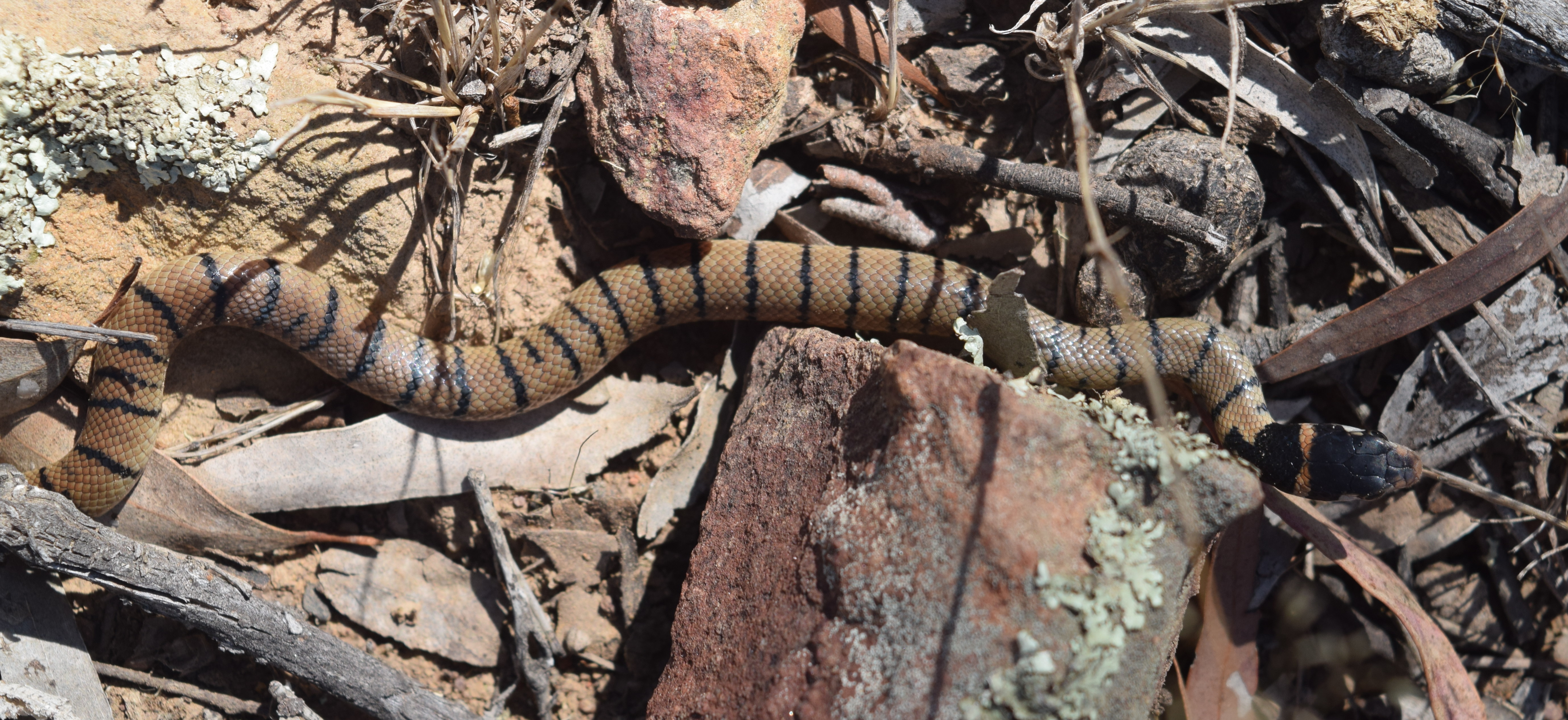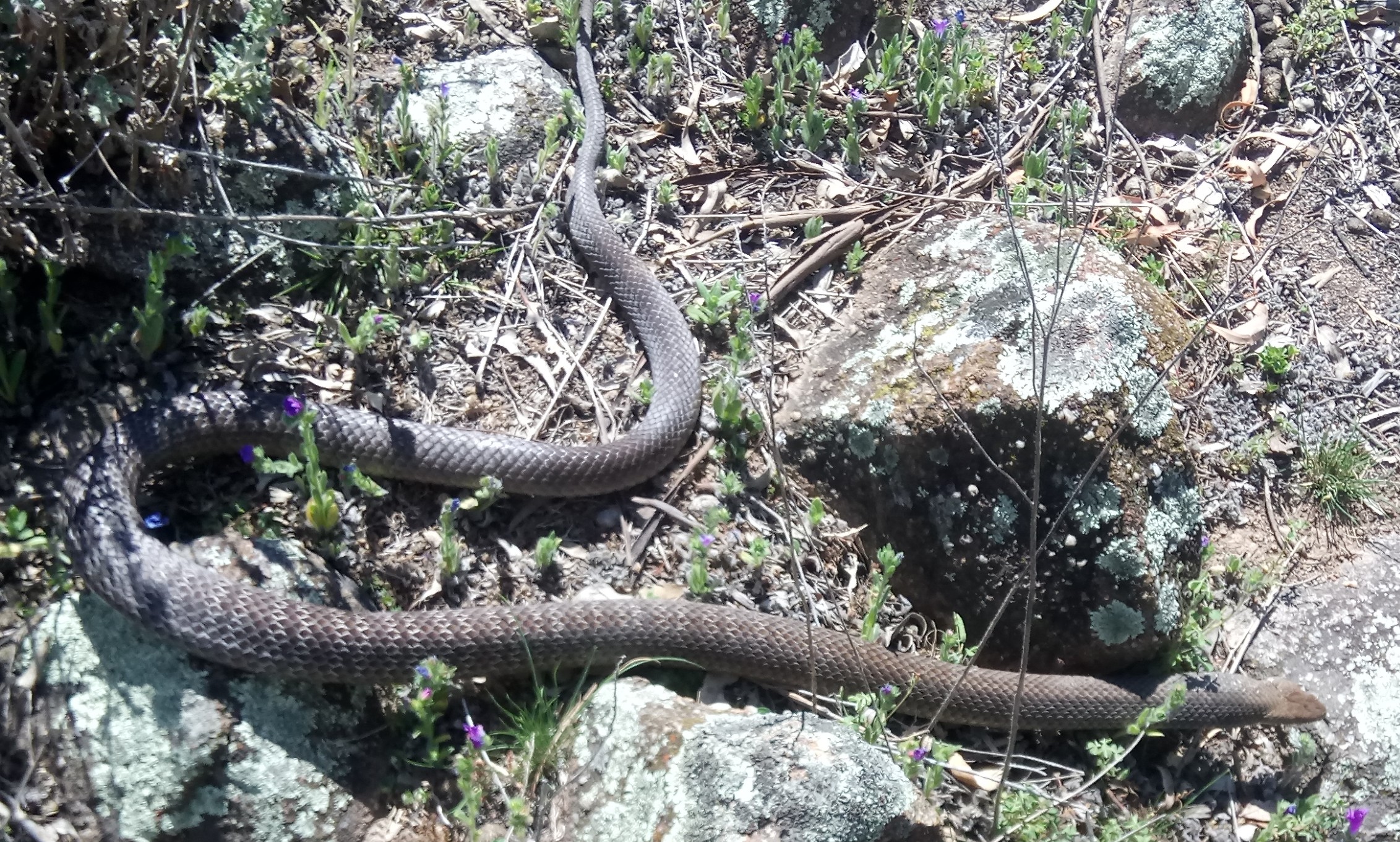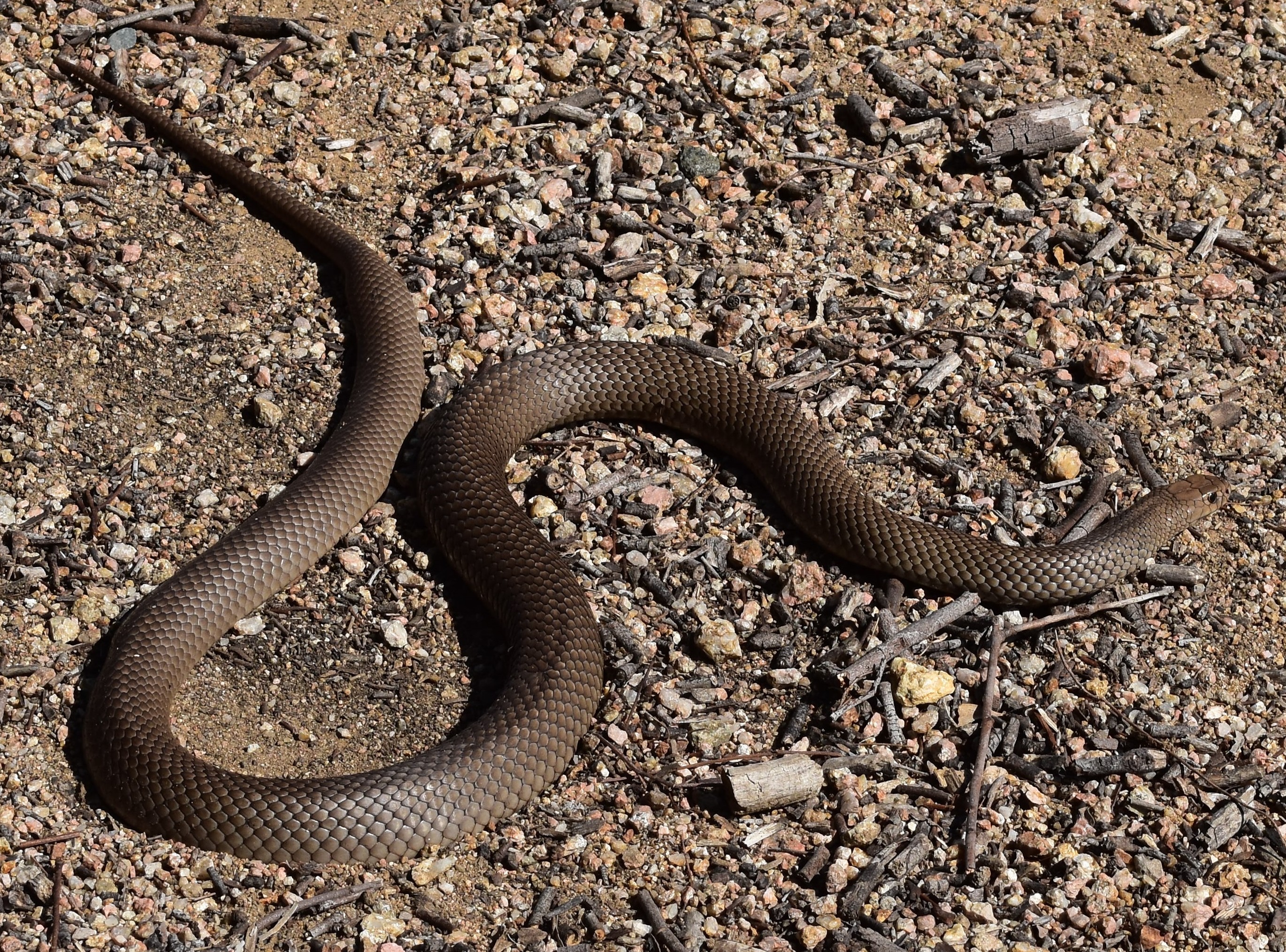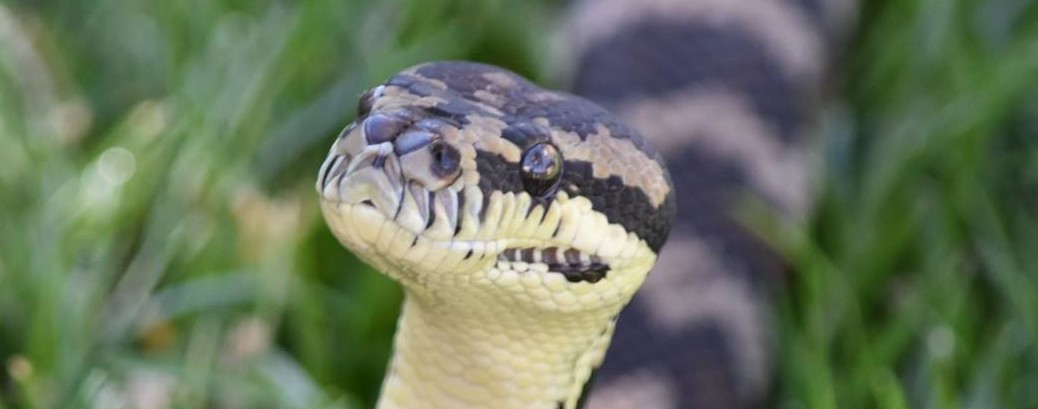Eastern brown snake (Pseudonaja textilis)
Also known as a common brown snake, the eastern brown snake are one of 9 species of brown snakes (Pseudonaja) currently described on the Australian continent. They are debatably the most dangerous species of snake in Australia (due to their shared distribution with humans) and occur across the whole eastern half of Australia, which includes the ACT! In fact, they are the most common species of snake we find in suburban areas, and 9/10 snakes we remove are brown snakes!
They can be easily distinguished from other snake species at an adult size, as they have a smooth matte look and are generally a shade of brown and occasionally silvery grey. They have a very slender head, which often looks like it’s slightly too small for its body size. However, as a hatchling or a smaller individual, eastern brown snakes may have a single black band (stripe) behind the head at the nape of the neck OR multiple black bands down the entire length of their body. This can confuse people as a few other local species may have similar markings to the untrained eye, and often banded individuals are thought to be tiger snakes.
They are currently recognised as the second most venomous land snake in the world, and are extremely fast. If aggravated (such as being cornered and unable to escape a threat), they will become defensive and actively protect themselves. If the threat does not pay attention to the warning signs or attempts of the brown snake to escape, then said threat may cop a potentially fatal bite. Fortunately, they are a shy creature that is reluctant to bite (and to envenomate) something that is much larger than them and that is not prey, and so their first instinct around humans particularly is to escape. If you have an eastern brown around, it is strongly advised that you do not actively approach, DO NOT touch (either attempting to catch or kill) and call an expert whilst keeping tabs on the animal from a safe distance. Remember, they are fast animals who are extremely flighty, and they can strike in the blink of an eye – they certainly deserve respect at all times.



MORE SNAKE SPECIES INFORMATION COMING SOON!

